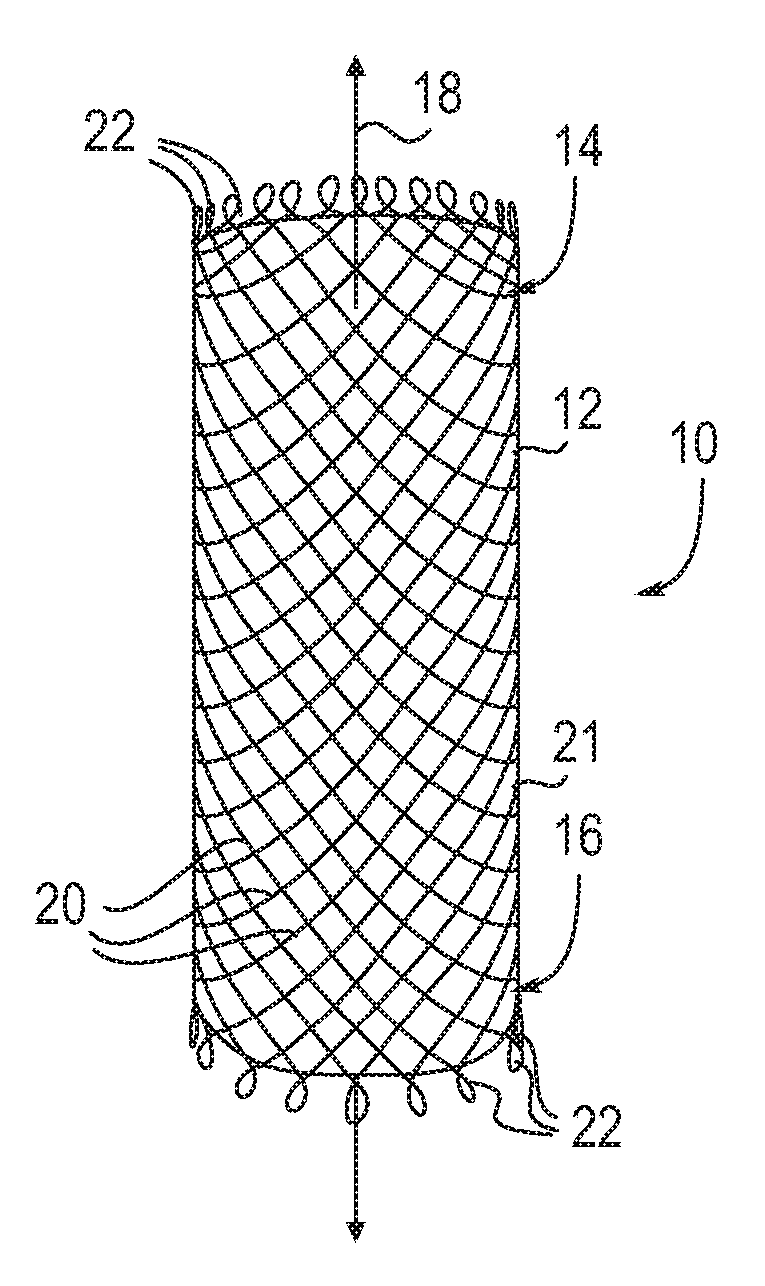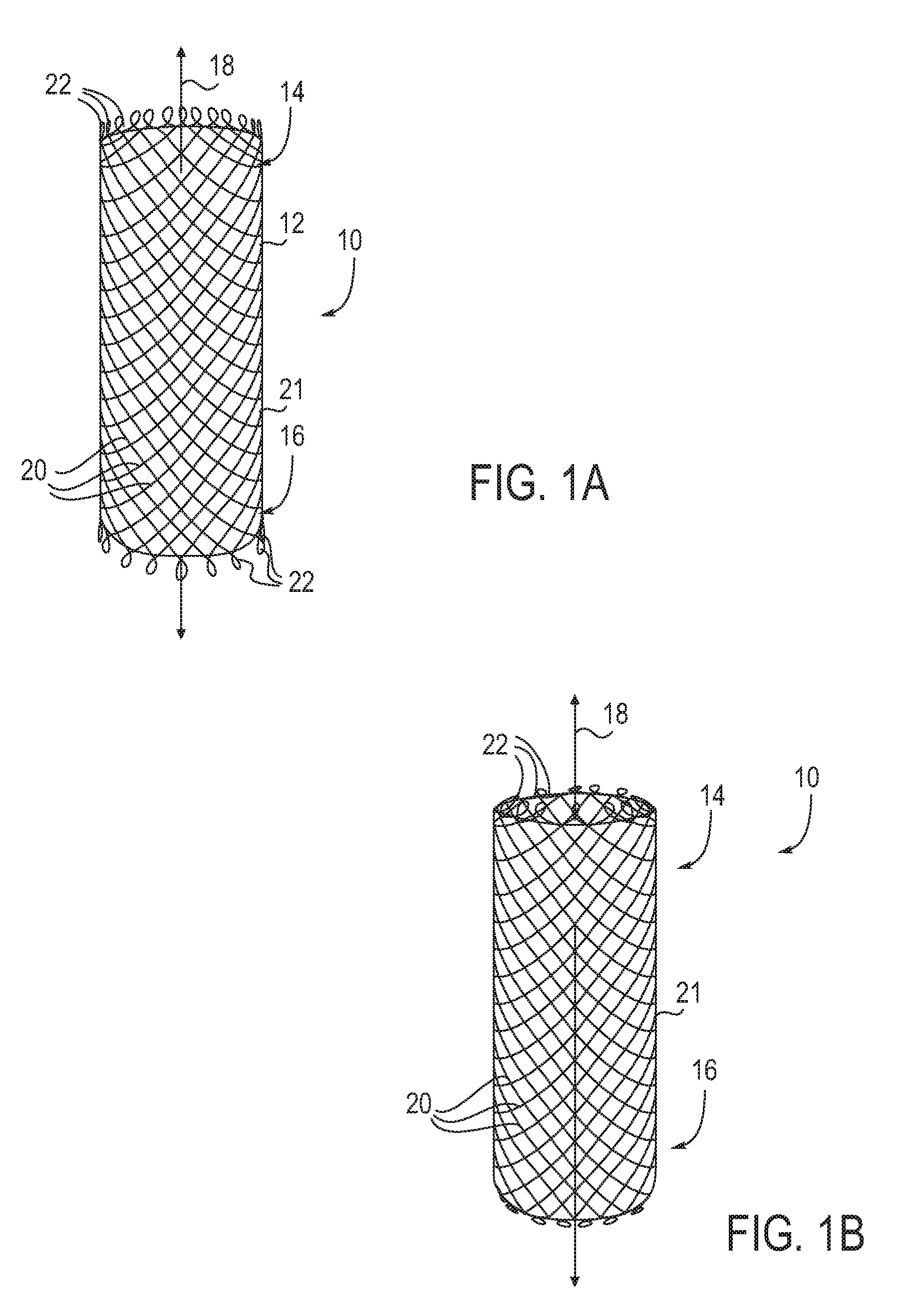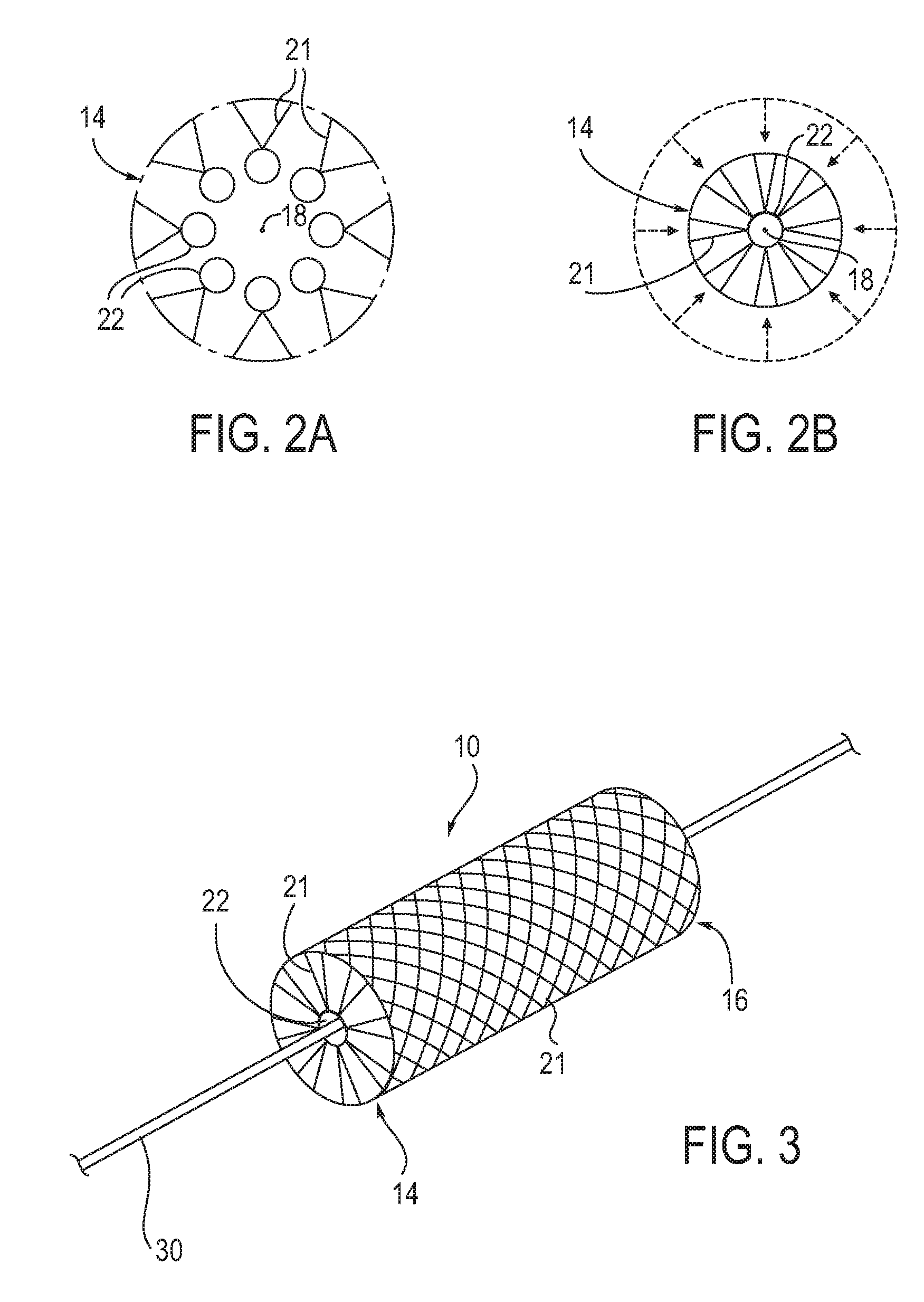Rail stent and methods of use
a technology of stents and rails, applied in the field of rail stents and methods of use, can solve the problems of limiting the size, type and location of the vessels within which a stent may be placed, affecting the use of bifurcated, branched or connected stents, and causing aneurysms to eventually ruptur
- Summary
- Abstract
- Description
- Claims
- Application Information
AI Technical Summary
Benefits of technology
Problems solved by technology
Method used
Image
Examples
Embodiment Construction
[0075]FIG. 1A illustrates an embodiment of a self-expanding stent 10 of the present invention. The stent 10 comprises an expandable body 12 having a generally tubular shape extending between a first end 14 and a second end 16 along a longitudinal axis 18. The expandable body 12 is transitionable between an unexpanded state, having a reduced cross-sectional diameter, and an expanded state having a greater cross-sectional diameter. In each of the described embodiments, the expandable body 12 is comprised of frame 21 formed from a plurality of wires 20 braided into a mesh or weave or formed by other methods, such as laser cutting, chemical etching or photo etching, to name a few. One or more portions of the frame 21 may be comprised of a superelastic material, a shape-memory material, Nickel-Titanium (Nitinol®), platinum, cobalt chromium, stainless steel, tantalum, gold, tungsten, platinum iridium, ePTFE, a polymer, a metal, Drawn Filled Tube (Nitinol® tube having a core volume filled ...
PUM
 Login to View More
Login to View More Abstract
Description
Claims
Application Information
 Login to View More
Login to View More - R&D
- Intellectual Property
- Life Sciences
- Materials
- Tech Scout
- Unparalleled Data Quality
- Higher Quality Content
- 60% Fewer Hallucinations
Browse by: Latest US Patents, China's latest patents, Technical Efficacy Thesaurus, Application Domain, Technology Topic, Popular Technical Reports.
© 2025 PatSnap. All rights reserved.Legal|Privacy policy|Modern Slavery Act Transparency Statement|Sitemap|About US| Contact US: help@patsnap.com



